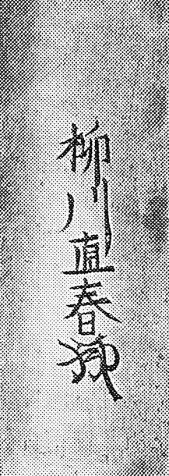-
Posts
791 -
Joined
-
Days Won
1
Content Type
Profiles
Forums
Events
Store
Downloads
Gallery
Everything posted by Franco D
-
meikan sword fittings One can expect some variations over time. Does the mei look natural? The quality of the shibuichi looks excellent, and the shakudo looks good as well. Enjoy!
-
The shape of the auction sword is lacking in elegance, too much saki zorii and lack of taper, imo; see https://yuhindo.com/ichimonji-norifusa-tachi/ . That, in addition to the two Ichi characters, hmm. It almost looks like somebody screwed up the mei placement not once, but perhaps twice. There was a time during the Muromachi period known for copying early swords including forgery of the mei. $16,000, plus another $4,000 to $5,000 and more for polish and paper equals a cheap Ichimonji or an expensive Koto copy. Is it live or is it memorex?
-
Where does that designation come from? The simple approach would be to read or have translated what the NBTHK origami says.
-

nihonto Satsuma Rebellion period
Franco D replied to Nik-to's topic in General Nihonto Related Discussion
https://books.google.com/books?id=46IYtI0nkiEC&pg=PA172&lpg=PA172&dq=Nōshū+Seki-jū+Kanetomo&source=bl&ots=BSFiYaWOOp&sig=ACfU3U2KaqTPUe7m1rJ1ciDf_cnl4QddWw&hl=en&sa=X&ved=2ahUKEwjg4PTFmID3AhXUZTUKHcP-CpgQ6AF6BAgMEAM#v=onepage&q=Nōshū Seki-jū Kanetomo&f=false -
https://www.touken-matsumoto.jp/en/product/shousai/MEN-2313
-
Mustela itatsi ; the one in the image linked below appears to have spots, fish are on its menu. Bushy tail ? Yes, and no. Ears seem more correct than a squirrels ears for these menuki. https://www.inaturalist.org/observations/64922182 Ko Kinko
-
What type of utsuri? Nioi utsuri? Nie utsuri? Hamon; primarily nioi? Nie? Ko Nie? Thank you.
-
Where does that designation come from?
-
Thank you for comments and the additional image.
-
What a good reason to attend a sword show in search for answers, where almost assuredly (???) there will be trained artisans in attendance. Brian Tschernega and John Tirado are two to consult with, try contacting.
-
Is it still considered to be an O Kissaki even without the presence of a yokote line? Isn't the yokote line what defines the kissaki? Or am I just not seeing the yokote line in this image?
-
https://www.google.com/search?q=Noshu+Seki+Kanekami+Kanetaka&sxsrf=APq-WBulG3XlrmCe9vkWfn-o2yAgkwoMKQ%3A1648438245628&ei=5StBYuz7JYaa_QaC55agDA&ved=0ahUKEwisgsKA7-f2AhUGTd8KHYKzBcQQ4dUDCA4&uact=5&oq=Noshu+Seki+Kanekami+Kanetaka&gs_lcp=Cgdnd3Mtd2l6EAM6BwgjELADECdKBAhBGAFKBAhGGABQ9xJYix9gnCVoAXAAeACAAXWIAb4BkgEDMS4xmAEAoAECoAEByAEBwAEB&sclient=gws-wiz Hi Ron, Not much. Having seen a Watanabe Kanenaga, it would be welcomed to see images of this sword if possible? Is the hamon Sanbonsugi? Thank you.
-
" Hakkakugata " with special thanks to Brian Tschernega for providing this information. Regards, Franco
-
Wonderful, Ray and Chris, thanks for sharing.
-

Inazuma, sunagashi, imozuru - or?
Franco D replied to george trotter's topic in General Nihonto Related Discussion
Below is an image from a katana that I once owned. What you see here is the boshi, a hakikake boshi. This hakikake boshi is in essence a continuation of the sunagashi from the hamon into the kissaki, where of course it is called hakikake. This image should give at least some idea of what "swept sands" looks like in reference to nihonto. -
Thank you for posting this link. A million thanks to Markus for the writing/translations he's done, this article in particular and especially. Kind Regards, Franco
-
1) When indoors in a private home or noble’s estate, one must surrender the katana. In an estate, castle, or even the home of anyone with rank, there is a servant whose job it is to receive these swords, and keep track of them. There is a closet or sword rack near the door where “checked” swords are kept until the owner of the weapon is preparing to leave. (note: it does not say surrender the wakizashi) https://sengokudaimyo.com/etiquette
-
One way to tell if a fuchi was intended/designed for a wakizashi is that it will be slightly indented (flattened) on one edge of the front rim to accommodate the use of a side fitting.
-

Classification of Nio school.
Franco D replied to just a rookie's topic in General Nihonto Related Discussion
Yamanaka lists only two, Ko Nio and Sue Nio. There is a note at the top of page 378 (Volume I newsletters revised); Ko Nio - worked in Yamato Tradition ca. pre- Memmu Era The first listings are Kiyozane and Kiyotsuna Genkyo Era. Of all my references I'd say Yamanaka is the most used. -

Mekugi, the real secret of Japanese blades?
Franco D replied to Peter Bleed's topic in General Nihonto Related Discussion
Hello Ian, When properly made the habaki attaches to the sword itself acting much like a spring clip contacting the sword on three surfaces. There will be instances when in fact the tang is markedly wider than the sword itself due to polishing over time. In such cases, if not most, the habaki will be felt scraping the sides of the nakago as it slides onto and passes over the nakago. A properly made habaki will pass over the sides of the nakago (even when wider than the sword) without scraping and yet fit tightly onto the sword, not the nakago. I should have been more direct, sincere apologies. One big reason for loose and damaged habaki is too often the tsuka when placed back onto the nakago is then seated with a firm tap or even a slap from the palm of the hand. The habaki not being "designed" to prevent the nakago from sliding back too far and splitting the tsuka (even though it acts as a stop) is then pushed/jammed too far forward driving the habaki onto the sword causing it to be damaged. Frequently, this results in a loose fitting habaki and/or a cut and split habaki. It can even result in a damaged hamachi. Since the habaki is not designed for this type of abuse during reassembly, very gentle tapping is required, in addition to using the forefinger and thumb of the non tapping hand to serve as a brake by firmly clasping the habaki, until seating takes place. And if one thinks about it, damage can come at both ends. -

Mekugi, the real secret of Japanese blades?
Franco D replied to Peter Bleed's topic in General Nihonto Related Discussion
Pardon? The force acting on a blade as it strikes an object begins at the point of impact before traveling down the sword. Which places the habaki first inline as a point of possible resistance as the sword bends and this energy transfers down the sword. High speed film shows that when a sword strikes a kabuto the sword begins to distort backwards in an arc. If the habaki were not to flex the sword could quite possibly fail meeting that resistance. The next point of resistance as the sword arcs backwards would be the seppa - tsuba or the front of the tsuka in the case of a shirasaya. Which means that if there was play between the mounts, or the tsuka in the case of a shirasaya, and the habaki due to not being fitted correctly, the sword could very well fail as it continues to arc backwards and encounters resistance with those surfaces. Hmm, if that was so, then please explain why there are so many loose fitting habaki in unsplit tsuka? Please explain why it is that we see habaki that have been cut, split, or damaged where it contacts the hamachi in unsplit tsuka? No mekugi, sword slides forward in saya, broken kissaki. No mekugi, sword goes flying, becomes a projectile with cutting motion. edit: 2/23/22. Further, so the mekugi is not there to lock in the tsuka on the backside in relation to the habaki locking in the tsuka on the front (sword) side? -

Mekugi, the real secret of Japanese blades?
Franco D replied to Peter Bleed's topic in General Nihonto Related Discussion
Food for thought, Nihonto through the early times were battle tested. That is the sword smiths would have received direct feedback as to how the sword performed or failed under stress. Perhaps a wooden mekugi was the result of this. When one watches the high speed film of a modern sword being tested on a kabuto, what one sees is that the sword undergoes incredible forces, distortions. As such if there wasn't some give somewhere designed into the system to absorb the transfer of energy, almost assuredly the sword itself would fail catastrophically. Both the mekugi and the habaki (the habaki would be the first in line in the transfer of energy) could be by design engineered to fail before the sword.







